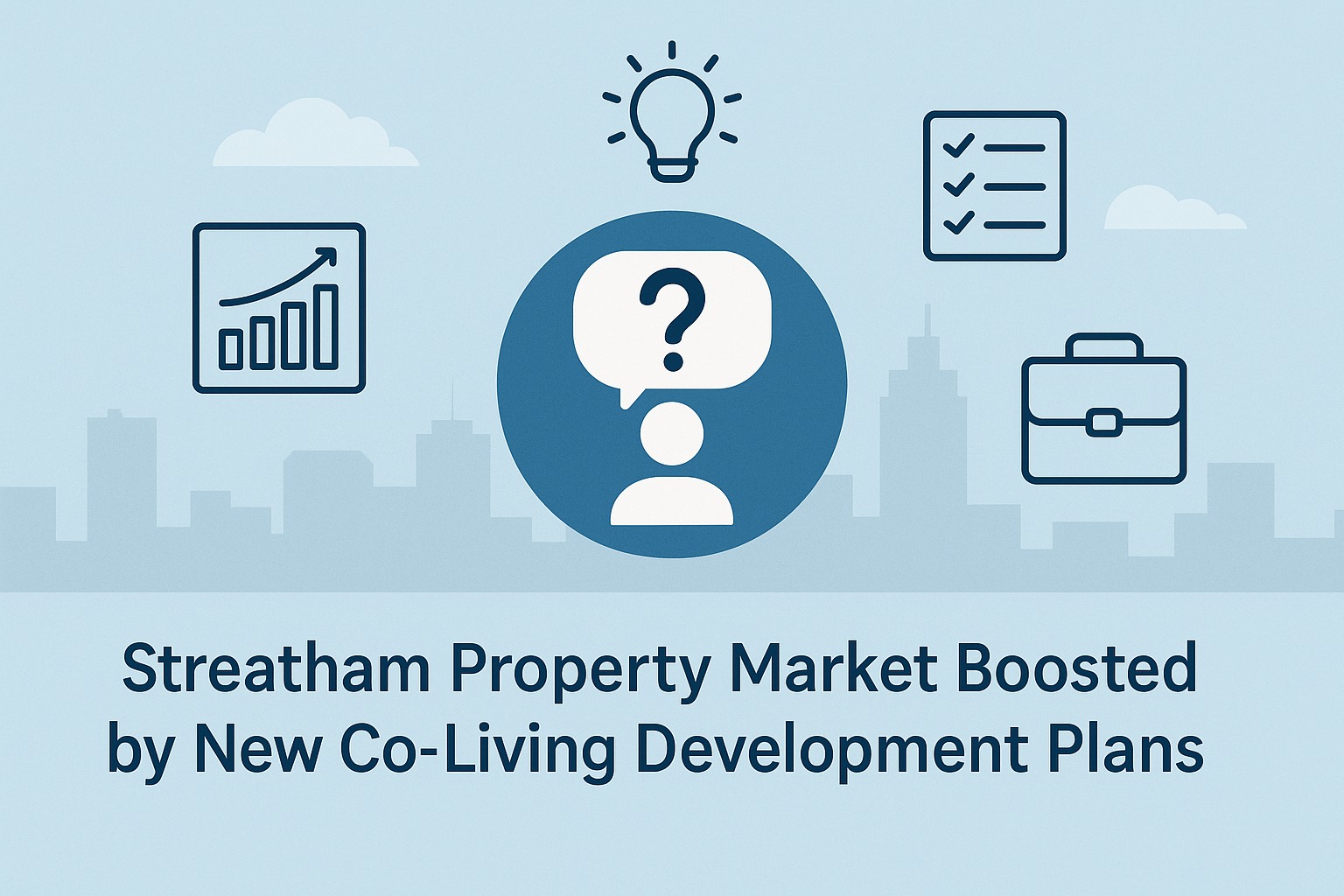Streatham Property Market Boosted by New Co-Living Development Plans

Once known primarily for its long high street and excellent transport links, Streatham is now drawing attention for something new—its bold step into the world of co-living. Plans for a major co-living development have recently been announced, and local interest is growing rapidly. This new project could signal a turning point for Streatham’s already evolving property market.
So, what does co-living mean for the area? And how might it influence buyers, renters, and investors alike? Let’s take a closer look at what’s happening in Streatham—and why the market is paying close attention.
A Quick Glance at Streatham’s Property Landscape
Streatham, nestled in the borough of Lambeth, has long offered a compelling blend of affordability and connectivity. For many first-time buyers and renters, it serves as an alternative to more expensive neighbouring areas like Clapham and Balham. With three well-connected train stations—Streatham, Streatham Hill, and Streatham Common—residents can reach Central London in under half an hour, making it a desirable location for commuters.
The property stock in Streatham is diverse. Victorian terraces line leafy residential roads, while 1930s semis and modern flats offer something for a wide range of tastes and budgets. In recent years, the area has attracted a younger demographic, drawn by new cafés, independent shops, and vibrant community life. Regeneration projects have brought new life to the high street, with upgraded public spaces and better amenities. These improvements have not gone unnoticed by buyers and investors, who view Streatham as an area with strong growth potential.
Despite its steady popularity, affordability remains a key challenge across London. As a result, alternative housing models that offer value and flexibility are gaining ground. Co-living, with its communal approach to urban living, appears well-suited to meet this need.
What Is Co-Living, and Why Now?
Co-living is a modern housing concept that combines private living quarters with shared communal spaces. It appeals especially to young professionals who want more than just a room in a house share. A typical co-living development features compact but stylish studios or en-suite rooms, with access to shared kitchens, lounges, workspaces, and sometimes even gyms or cinemas. Rents are usually all-inclusive, covering utilities, internet, and cleaning services, which makes budgeting simpler.
This housing model has grown in popularity over the past few years, particularly in areas where traditional rental prices are high. London, with its ever-climbing property values, is a prime candidate. Areas like Wembley and Canary Wharf have already embraced co-living, but Streatham is relatively new to the concept.
The shift to hybrid and remote working has also changed how people live. Many now look for homes that offer more than just a place to sleep. Communal workspaces, high-speed internet, and social opportunities are all part of the co-living appeal. For those moving to London without an established network, the built-in community aspect is another big draw.
The New Streatham Development: What We Know So Far
Although final plans are still being reviewed, early details of the new Streatham co-living project are promising. The development will likely include around 200 self-contained studio apartments, each with its own bathroom and compact kitchen. These will be complemented by large communal areas designed to encourage interaction and shared experiences.
Shared kitchens and lounges will be available on each floor, offering a balance between privacy and social living. A co-working space and a café for residents are also planned, reflecting the growing need for flexible working environments. The inclusion of a rooftop garden is another thoughtful addition, providing outdoor space with impressive views across South London and towards the City.
Health and well-being are also on the agenda. The proposed development includes an on-site gym, bike storage and easy access to local green spaces like Streatham Common and Tooting Bec Common. The building will use energy-efficient materials and feature solar panels and green roofs as part of its sustainability strategy.
Importantly, the location just off Streatham High Road means future residents will benefit from excellent transport, shopping, and dining options—all within walking distance.
Market Reaction: Optimism from Buyers and Investors
News of the development has been well received by many in the local property sector. For estate agents in Streatham, it’s a clear signal that the area is continuing to evolve in response to modern housing needs. Co-living isn’t just a trendy concept—it reflects a broader shift in how people approach urban living.
From an investment perspective, co-living units offer strong potential returns. Rental yields can often be higher due to the premium placed on lifestyle and convenience. There is growing demand for flexible, fully furnished accommodation in London, particularly among young professionals and digital nomads. These renters are often willing to pay more for the amenities and convenience that co-living offers.
Buyers, too, are showing interest. Some are looking at co-living as a longer-term investment opportunity, while others are exploring the model for personal use, particularly if they work from home or plan to live in London part-time.
Potential Concerns and Local Response
As with any large-scale development, there are concerns. Some local residents have raised questions about increased population density, pressure on transport and healthcare services, and the character of the neighbourhood. Noise, litter, and overdevelopment are common fears when a project of this scale is proposed.
However, the developers have committed to working closely with the community and Lambeth Council. Public consultations have already begun, with plans to refine the proposals based on feedback. The use of Section 106 agreements is expected to ensure that local services benefit from financial contributions tied to the development.
It’s worth noting that many locals see this as an opportunity rather than a threat. The potential for job creation, increased foot traffic for local businesses, and improved infrastructure are viewed positively. If managed properly, this co-living development could set a new benchmark for sustainable, community-oriented housing in South London.
The Bigger Picture: What This Means for Streatham’s Future
This isn’t just about one building. The introduction of co-living into Streatham reflects broader changes in how cities are developing. London is evolving, and its outer boroughs are playing a bigger role in housing innovation. For Streatham, this could be a chance to establish itself as a leading location for modern, flexible living.
Over the next few years, we may see more developments inspired by this model. Build-to-rent schemes, modular housing, and other forms of urban innovation could follow. Streatham is well-placed to benefit from these changes thanks to its infrastructure, green spaces, and growing reputation as a vibrant, welcoming community.
In the meantime, the local property market is already showing signs of movement. Increased interest from renters, investors and even first-time buyers suggests that confidence is high. If the project goes ahead as planned, it could well attract further investment and development in the surrounding area.
Final Thoughts: A New Chapter for Streatham
Co-living is not a one-size-fits-all solution, but it is part of a larger response to London’s housing challenges. For young professionals, newcomers to the city, and those seeking a better work-life balance, co-living provides an appealing mix of flexibility, affordability, and community.
Streatham, with its charm, connectivity, and growing local scene, is a fitting location for this kind of innovation. The upcoming development represents more than just another housing scheme—it’s a reflection of changing lifestyles and the need for housing to adapt accordingly.
As the planning process unfolds, it will be interesting to see how the project shapes Streatham’s future. One thing is certain: the local property market is entering an exciting new phase.



